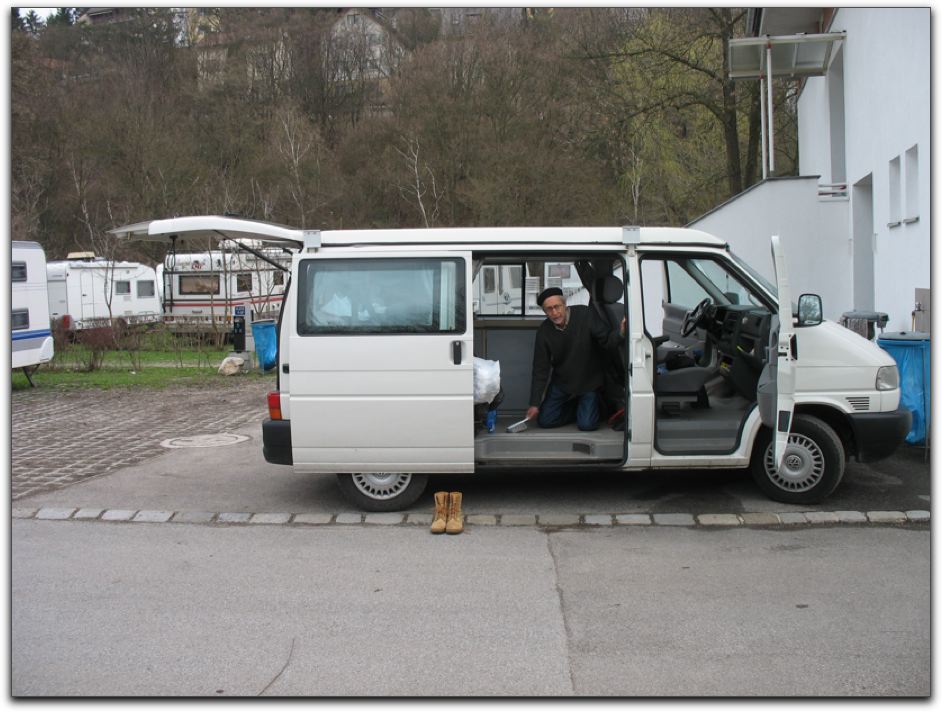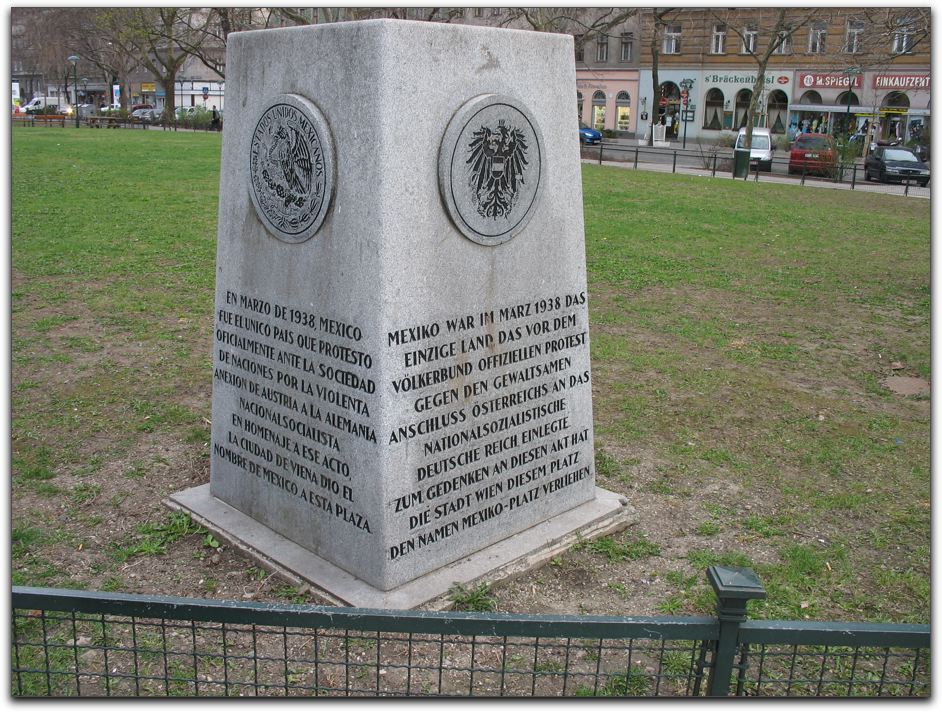
Jewish identity in Austria seems so complicated, (maybe it is everywhere) --as is the history of Jews here; repeated toleration mixed with expulsions with the result that Jews seem to be a bit shah-shtill because of the external expectations. Synagogues were not allowed to mark themselves publicly and today the Jewish Welcome Service, a story unto itself, does not even have a sign in front.
Austria, welcomed Hitler, (in fact Mexico was the only country that protested the Anschluss)
and was late to provide reparations (see After Survival by Leon Zelman the founder of the Jewish Welcome Service and The Viennese by Paul Hofmann).
Most, if not all of the Holocaust memorials are relatively recent, indeed, maybe from the time of the 60th anniversary of the Holocaust. On one side, the liberal synagogue Or Chadasch received city and state funding for its renovation of its space into a very tasteful sanctuary, library, classroom and kitchen.
The Gratz synagogue was recently rebuilt through public funds though very few of the some 100 Jewish families in the Gemeinde wish to use the synagogue. It now therefore serves only as a Cultural Center, with some 2000 on its mailing list.
Our Jewish walking tour of Leopoldstadt included a young Austrian woman who lives in the area (so named because King Leopold kicked the Jews out and renamed it after himself). She calls herself a "non-practicing Jew", which may mean that she is Jewish by birth but has not registered with the Gemeinde, or that she has registered and only attends on Yom Kipppur. We learned about the bombing of the bridges by the Luftwaffe to create a line before the advancing Russians, that the city had been occupied for 10 years after the war, that the allies divided up the city and the center ring was shared by the four, that the Nazis had changed the genealogy of Johann Strauss who had a Jewish grandfather (the detail for this I cannot find on the Web), so that he could remain a popular Austrian figure, The Blue Danube and all. At the Jewish Museum run by the government we saw a show about Leon da Ponte, Mozart's librettist, and that the Nazis had varying ways of dealing with his Jewish birth (he was baptized with his brother and father when he was 14). The guide did a great job and seemed quite clear in her criticism of the Nazis.
Shabbat morning in Vienna, April 8, we did a bit of shul hopping. We went to the Orthodox synagogue the Stadttempel, the longest standing synagogue in Vienna. The Nazis did not destroy it on Kristallnacht because it was part of a row of buildings and they did not want to damage the other buildings. I of course sat in the women's balcony. Then later on we moved on to the Liberal synagogue Or Chadasch where the security guard remembered us from the night before and let us in without a passport check. At Or Chadasch, the American BM did a very good job with the Torah reading.
As Vienna houses many ethnic groups and nationalities, so does Or Chadasch. At Or Chadasch we met a British born woman who moved to Vienna for a better cost of living and ability to still work for her Vienna-based company, as Jews traditionally have immigrated to Vienna for financial reasons (money lending, court Jews, financiers). She finds herself having to explain this decision to family and friends and does so, not wanting to leave Vienna Judenrein. She calls these gestures to synagogues by the state and city, "guilt money", and not anywhere near the wealth which the Nazis derived from expropriating Jewish property which in turn was transferred over to the Austrian government. Our email contact at the synagogue, moved back to Vienna after her grandparents and parents had left during the war for the States. Karen Engle, Director of the Gratz Jewish Cultural Center, came with her husband for his job, and stayed after he tragically died. She brings her daughter to Vienna (a two hour drive) for Bat Mitzvah training. She's holding her Seder though in Gratz, instead of driving in to Vienna.
On our walk the following day, we happened into the local Marriott hotel, (next to the Herzl Platz):
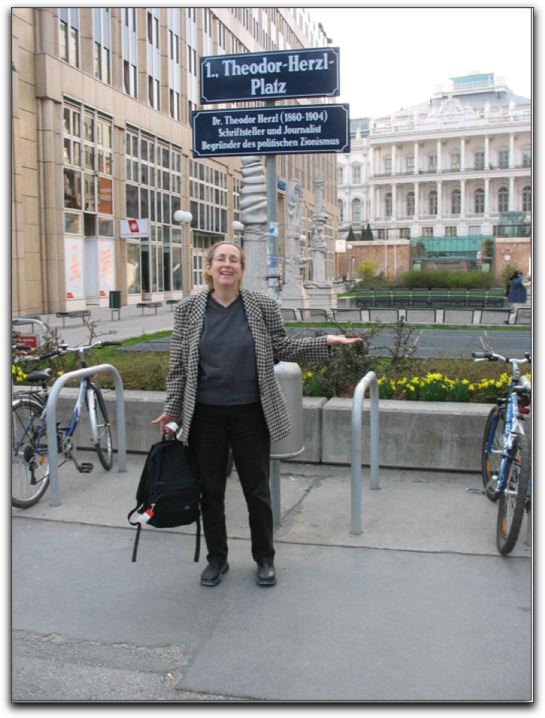
We heard a lot of loud music, looked at the schedule of the day, to learn that there was a huge celebration for a Brit Milah.
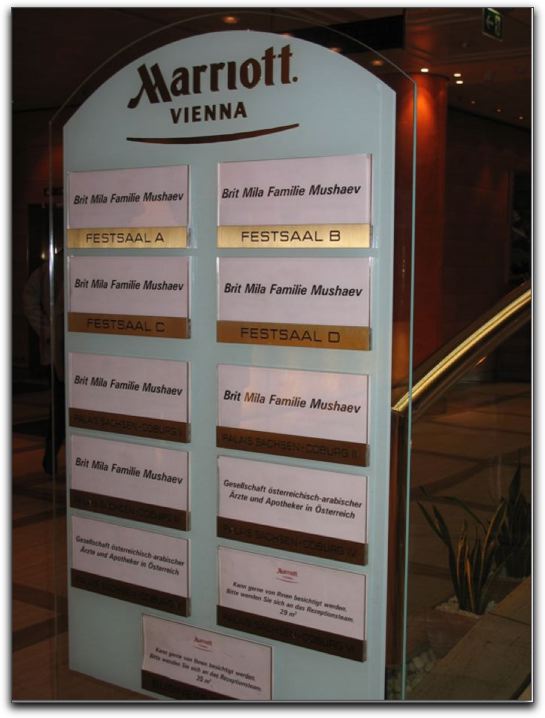
The Kisei Eliyahu ( the Elijah chair) was set up in a public space
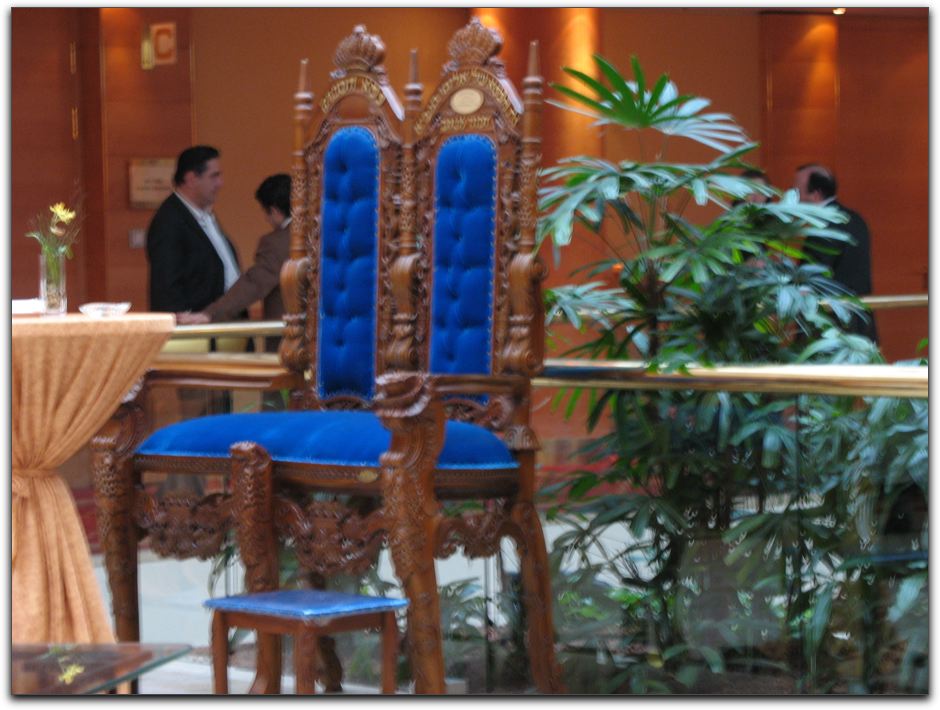
and the party looked like a very elaborate Bar/Bat Mitzvah or wedding. There's definitely Jewish life here, Chasidim, kosher restaurants, kosher markets, (we supplied ourselves with matzah here) etc.
On our walks through Vienna on Shabbat afternoon we climbed up to the Judenstrasse where we found the local Hashomer Hatzair Ken busy with its activity.
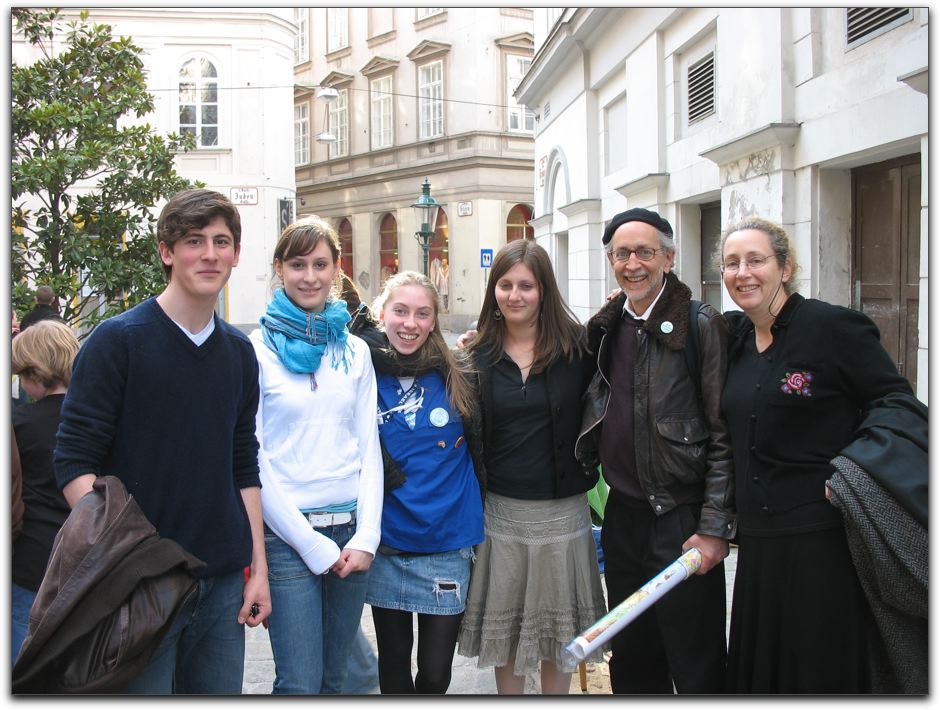
The morning before Seder was spent cleaning for Pesach.
